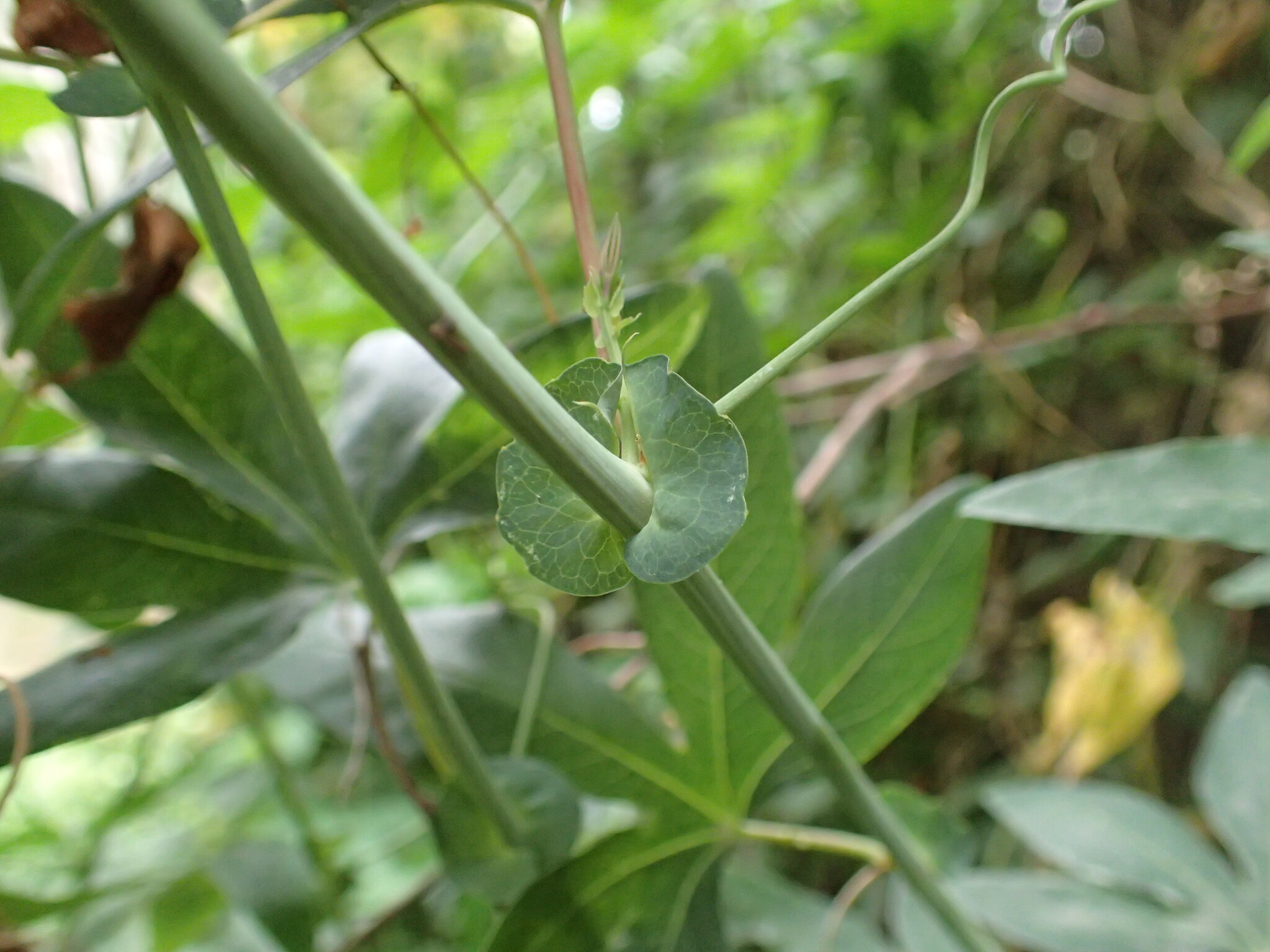
Vines with coiled axillary tendrils, rarely shrubs or small trees. Leaves alternate, entire or palmately lobed, mostly with raised nectary glands on the leaf stalk. Stipules small, soon shed or absent. Flowers regular, mostly bisexual, solitary or in few-flowered clusters with the common stalk having 3(-5) bracts. Sepals mostly 5, occasionally fused at the base. Petals the same number as the sepals or absent, free or shortly united at the base. Rows of thread-like filaments or scales (corona) often occur between the petals and stamens. Stamens and ovary often on a common stalk (androgynophore). Stamens mostly 5, rarely more. Ovary superior with 1 chamber, placentation parietal. Fruit a capsule or berry; seeds with a pulpy covering (aril).
Widely bred and selected in horticuture some members of the family may be poisonous to livestock.
Edible fruits of many species of Passiflora, esp. in the tropics, used also for juices, confectionery, flavourings etc.
18 genera and about 600 species, mostly from the tropics and subtropics especially America (Australia has 2 native genera and 14 species mostly in the tropics and eastcoast).
Source: (1997). Passifloraceae. In: . Horticultural Flora of South-eastern Australia. Volume 2. Flowering plants. Dicotyledons. Part 1. The identification of garden and cultivated plants. University of New South Wales Press.
